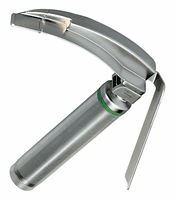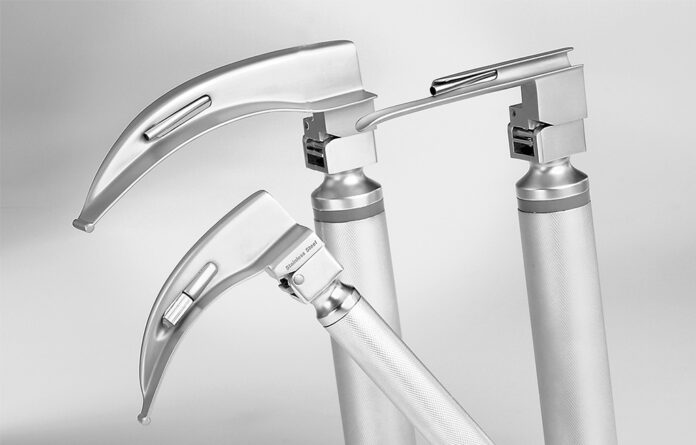LARYNGOSCOPES

Laryngoscopy is a visual exam using a laryngoscope to view below the back of the throat. This procedure will help the Physician in diagnosing the Pain in the ear or throat, Blockages in airways, Narrowing of throat (stenosis or strictures), Difficulty in swallowing etc.
Laryngoscopy can also be used to treat some problems in the vocal cords or throat. For example, long, thin instruments can be passed down the laryngoscope to remove small growths (tumors or polyps) on the vocal cords. A small laser on the end of a laryngoscope can also be used to burn away abnormal areas. The larynx can be looked at either directly or indirectly.
Direct laryngoscopes

Devices for direct laryngoscopy establish a direct line of sight between the eye of the practitioner and the larynx. These include the ‘standard/ typical handle and blade assemblies, such as the widely used McIntosh or Miller blades. These are used by ENT Surgeons during laryngeal or tracheal surgeries.
Here the doctor will use a laryngoscope for pushing the tongue down and lifting up the epiglottis, which is the cartilage flap that covers the windpipe. During breathing it opens and closes when we swallow. The doctor can use this procedure to remove samples of tissue for testing or remove small growths. They can also use it to insert a tube into the
trachea to help to breathe in surgery or during an emergency. This procedure takes a longer time than the others. Sometimes general anesthesia may be given
Direct Fiber-Optic Laryngoscopy
It is done by a lot of doctors now, referred to as flexible laryngoscopy. Here the doctor will use a small telescope which is at the end of a cable and goes in the nose and into the throat. It is a quick procedure. The doctor may use a decongestant to open the nasal passages.
Indirect laryngoscopes

Indirect laryngoscopes use camera with or without fiber optic technology to view the larynx. It is the easiest form. These devices include, video laryngoscopes or optical stylets. They allow an ‘around-the-corner’ look at the larynx by moving the point of view downwards along the curved laryngoscope blade closer to the vocal chords.
A healthy larynx is essential to protect the vocal cords (folds). Air passes through the larynx and over the vocal cords, causing them to vibrate, which produces sound. It helps to breathe, talk and swallow. It is positioned at the top of the trachea or windpipe at the back of the throat. It contains the vocal cords that vibrate, making sounds as we speak




